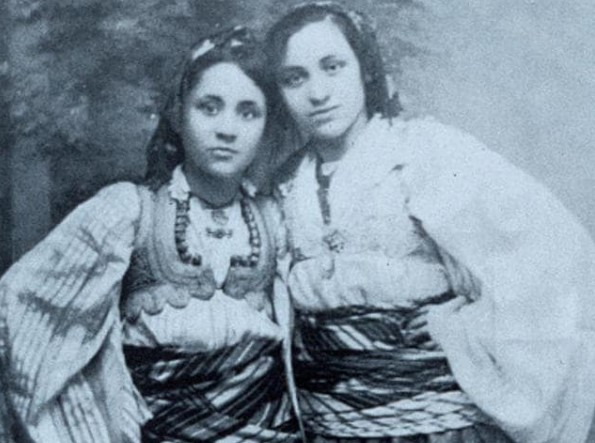
all images from Wikimedia Commons
She cared for the sick and dying in one of the most overcrowded, poverty-stricken cities of the world. She did this even though she had no money, was a member of a religious minority in her adopted country, and was completely alone.
But the entire world 1 fell in love with Mother Teresa, the diminutive Albanian nun who won a Nobel Peace prize for her work for the poor. The religious congregation that she founded in Calcutta (now called Kolkata), India, with just twelve women, now includes2 5,750 religious sisters, multiple branches for both women and men, and religious communities all over the world.
However, as Mother Teresa herself pointed out, she and her sisters were not social workers. Instead, she and her Missionaries of Charity chose to care for the poor out of their love for Jesus Christ. While one can certainly demonstrate Teresa’s charity through her willingness to live in rat-infested hovels and beg for the needy, her sanctity was rooted in her love for God.

Anjezë Gonxhe Bojaxhiu was born in Skopje, North Macedonia, the youngest of three children. Her father’s sudden death, perhaps caused by his political enemies, left her family in serious financial difficulties. Yet Anjezë’s mother continued to help the poor, even sharing their family dinners with those who were in greater need. Because of the Catholic faith Anjezë practiced in her own family, she was able to discern that God was calling her to religious life when she was a young woman. After she traveled to Ireland and became a religious sister in the Sisters of Loreto, she demonstrated an ability to quickly learn new languages and became a popular teacher among her students in India.
However, Sister Teresa’s natural gifts with language and teaching, as well as her faithful upbringing, did not instantly make her a saint. Instead, she made small, ordinary decisions in her life that helped her gradually grow in virtue and holiness. Three of her most obvious strengths were: 1) her obedience, 2) her humility, and 3) her balance of the contemplative and active life.
After serving as a religious sister in India for nine years, Teresa heard “a call within a call” while she was riding on a train. She believed God was asking her to leave her order and join the poor people who were living just outside the doors of her religious community.
But she knew that she must be obedient to her vocation since she had taken vows to spend her life as a Sister of Loreto. That’s why she carefully explained what she had experienced to her superiors, and then she waited. And waited. A year later, her superiors noted that Teresa remained convicted that this inspiration had come from God, that she understood the dangers of what she proposed, and that she had remained fully obedient to her duties as a sister while she waited for her superiors to respond. If she had not demonstrated such complete obedience to her current state in life, she might not have been permitted to try a new one and eventually become the founder of a new order.


Another of Teresa’s strengths was her astonishing humility. After the fame of winning a Nobel Peace prize, it seemed that every world leader wanted to honor her and have their picture taken with her. Wouldn’t anyone be pleased over the prospect of being honored and feted by the rich and famous? Not Mother Teresa. When she arrived in America on one visit and saw crowds of people cheering, she quietly told one of her sisters that it was like the Way of the Cross. Rather than being tempted to take pride in her accomplishments—which were considerable—she found it painful to be the center of attention and was reminded of the parallels of her life to that of Jesus Christ on Good Friday. Considering herself a mere “pencil” in God’s hand, she thought only of Him and of how best to serve Him and those who were most in need.
Finally, while most people think of Mother Teresa as leading a very active life as a religious sister, she was also a true contemplative. She repeatedly pointed out that her order did not begin to grow until she and her sisters began to spend an hour in Eucharistic Adoration every day. Teresa herself often spent more time alone with her Lord than she required of her sisters, despite her many commitments.
After Teresa’s death, Father Brian Kolodiejchuk wrote a book about the greatest challenge in her life: the decades she spent in spiritual darkness after she left the Loreto order. Unfortunately, unbelievers often seem to wrongly believe that Teresa somehow had doubts about the faith or about God’s love during this time.
In Mother Teresa: Come Be My Light, it is clear that Teresa was deeply in love with the Lord at the time that she heard God’s call to leave her convent. Some thought she was so spiritually advanced that she might start to receive visions or other mystical phenomena.
However, once Teresa agreed to leave the convent, her “dark night of the soul” began. This “dark night” is a well-known spiritual experience described by some of the greatest mystics of the Church. During this period of testing, a deeply faithful Christian no longer receives spiritual consolations from God, even during times of prayer. Just like other mystics, Mother Teresa had to trust in God’s love for her during this time even though she did not feel His closeness. Saints such as Teresa of Avila and John of the Cross wrote about the deep and profound pain they experienced while being purified in this way. But this process always prepares the woman or man to draw even closer to God. Unlike so many other saints, Teresa’s spiritual darkness did not last for months, but for decades.
Perhaps there is a relationship between the length of this dark night in Teresa’s soul and the many years she was simultaneously treated like a pop star by the media. Perhaps this long and painful experience, unknown to everyone except her spiritual directors, helped her remain humble despite being constantly fawned over by crowds of people.
But these three virtuous practices of Saint Teresa of Kolkata are not too hard for the rest of us to follow. Any faithful person can pursue holiness in the same way. A laywoman doesn’t need to travel to India to learn obedience; she can be obedient by serving the needy in her own community, starting with her own family. A layman can strive to do his job, whatever it is, with honesty and humility, whether other people notice his hard work or not. And people of any age—children, teens, adults, retirees—can consciously and constantly attempt to balance their time in prayer with the needs of their duties in life, whether those duties involve studying, working, caring for others, or even relaxing with family and friends.
Few saints become world famous during their own lifetimes. But God allowed people all over the globe to witness Teresa’s faith, hope, and charity as she cared for the poor, worked for the needy, begged for peace, and prayed with those who were suffering. Above all else, it was Saint Teresa’s joy that touched so many hearts and should inspire all of us to want to walk that same hidden path of holiness.


